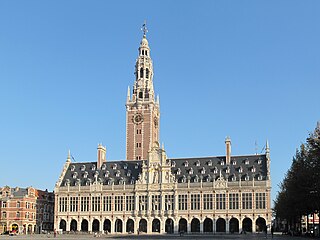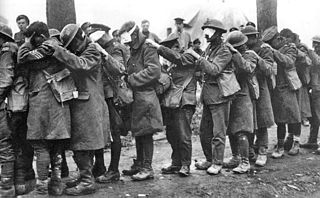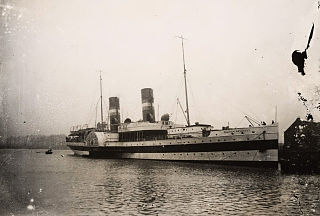 W
WThe city of Leuven in Belgium was the seat of three successive universities, each of which had a notable academic library.
 W
WThe history of Belgium in World War I traces Belgium's role between the German invasion in 1914, through the continued military resistance and occupation of the territory by German forces to the armistice in 1918, as well as the role it played in the international war effort through its African colony and small force on the Eastern Front.
 W
WThe use of toxic chemicals as weapons dates back thousands of years, but the first large scale use of chemical weapons was during World War I. They were primarily used to demoralize, injure, and kill entrenched defenders, against whom the indiscriminate and generally very slow-moving or static nature of gas clouds would be most effective. The types of weapons employed ranged from disabling chemicals, such as tear gas, to lethal agents like phosgene, chlorine, and mustard gas. This chemical warfare was a major component of the first global war and first total war of the 20th century. The killing capacity of gas was limited, with about ninety thousand fatalities from a total of 1.3 million casualties caused by gas attacks. Gas was unlike most other weapons of the period because it was possible to develop countermeasures, such as gas masks. In the later stages of the war, as the use of gas increased, its overall effectiveness diminished. The widespread use of these agents of chemical warfare, and wartime advances in the composition of high explosives, gave rise to an occasionally expressed view of World War I as "the chemist's war" and also the era where weapons of mass destruction were created.
 W
WThe Crucified Soldier refers to the widespread atrocity propaganda story of an Allied soldier serving in the Canadian Corps who may have been crucified with bayonets on a barn door or a tree, while fighting on the Western Front during World War I. Three witnesses said they saw an unidentified crucified Canadian soldier near the battlefield of Ypres, Belgium, on or around 24 April 1915, but there was no conclusive proof such a crucifixion actually occurred. The eyewitness accounts were somewhat contradictory, no crucified body was found, and no knowledge was uncovered at the time about the identity of the supposedly crucified soldier.
 W
WThe destruction and sacking of the city of Kalisz by German troops took place from 2 August until 22 August 1914 at the beginning of World War I. The event is also known as the Pogrom of Kalisz or Poland's Louvain.
 W
WCharles Algernon Fryatt was a British mariner who was executed by the Germans for attempting to ram a U-boat in 1915. When his ship, the SS Brussels, was captured off the Netherlands in 1916, he was court-martialled and sentenced to death because he had attacked the submarine as a non-combatant. International outrage followed his execution near Bruges, Belgium. In 1919, his body was reburied with full honours in the United Kingdom.
 W
WGerbéviller is a commune in the Meurthe-et-Moselle department in north-eastern France. It is 33 km south east of Nancy and 73 km south-south-east of Metz. Culturally and historically, it is part of Lorraine.
 W
WDuring World War I, Imperial Germany was a military ally of the Ottoman Empire, which perpetrated the Armenian genocide. Many Germans present in eastern and southern Anatolia witnessed the genocide, but censorship and self-censorship hampered these reports, while German newspapers reported Turkish denial of the massacres. The idea of German co-responsibility as a perpetrator of the genocide has been proposed, but rejected by other scholars. Although individual Germans tried to publicize the Armenians' fate or save lives, the German state has been criticized for "extreme moral indifference" to the plight of Armenians and not doing anything to stop the genocide. In 2016, the Bundestag apologized for Germany's "inglorious role" in a resolution recognizing the genocide.
 W
WHS Koningin Regentes was a Dutch hospital ship that was torpedoed by the Imperial German Navy submarine SM UB-107 on 6 June 1918 while returning to Rotterdam, the Netherlands, from Boston, Lincolnshire, England.
 W
WThe Leipzig war crimes trials were trials held in 1921 to try alleged German war criminals of the First World War before the German Reichsgericht in Leipzig, as part of the penalties imposed on the German government under the Treaty of Versailles. Twelve people were tried, and the proceedings were widely regarded at the time as a failure. In the longer term, they were seen by some as a significant step toward the introduction of a comprehensive system for the prosecution of international law violations.
 W
WOtto Viktor Karl Liman von Sanders was a German general who served as an adviser to the Ottoman Empire during the First World War. In 1918 he commanded an Ottoman army during the Sinai and Palestine Campaign. On the whole Sanders provided only limited help to the Ottoman forces.
 W
WHMHS Llandovery Castle, built in 1914 in Glasgow as RMS Llandovery Castle for the Union-Castle Line, was one of five Canadian hospital ships that served in the First World War. On a voyage from Halifax, Nova Scotia to Liverpool, England, the ship was torpedoed off southern Ireland on 27 June 1918. The sinking was the deadliest Canadian naval disaster of the war. 234 doctors, nurses, members of the Canadian Army Medical Corps, soldiers and seamen died in the sinking and subsequent machine-gunning of lifeboats. Only 24 people, the occupants on a single life-raft, survived. The incident became infamous internationally and was considered, after the Armenian genocide, as one of the war’s worst atrocities. After the war, the case of Llandovery Castle was one of six alleged German war crimes prosecuted at the Leipzig trials.
 W
WThe Rape of Belgium was the mistreatment of Belgian civilians by German troops during the invasion and occupation of Belgium in World War I.